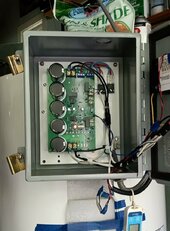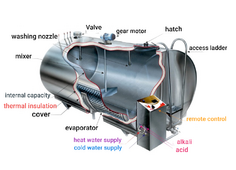Daddy Tanuki
Solar Wizard
so tank is bought and paid for. Next is the waste oil burner for emergency heat when solar is not enough. I have a CO2 cylinder which will make up the core of the burner. I have a kerosene forced air burner that will be the light off assistant. after that it is up to the waste oil to provide the needed heat.
I will provide photos as this project advances. solar will be (at this point) two heat pump water heaters, that run from 1100 to 1500 when solar is at max with a limiter of 53 volts on the pack.
So when batteries are at 53 volts the two heat pumps will run off of a Sigineer 5kw HF inverter at 230 volts on a timer that is built into the two heat pumps.
If voltage is below the target of 53 volts a relay will interrupt the heat pumps and not allow them to turn on.
If its above 53 the heat pumps will run until there timer shuts them off or until the voltage on the pack drops below 53 volts. So figure about 3-4 hours a day.
This will take some observation to get the cut off points correct, but the longer I think about this the more I am sure that analog controls will be better than iffy digital controls. This is very location dependent as WF and BT are not available at the location.
I will provide photos as this project advances. solar will be (at this point) two heat pump water heaters, that run from 1100 to 1500 when solar is at max with a limiter of 53 volts on the pack.
So when batteries are at 53 volts the two heat pumps will run off of a Sigineer 5kw HF inverter at 230 volts on a timer that is built into the two heat pumps.
If voltage is below the target of 53 volts a relay will interrupt the heat pumps and not allow them to turn on.
If its above 53 the heat pumps will run until there timer shuts them off or until the voltage on the pack drops below 53 volts. So figure about 3-4 hours a day.
This will take some observation to get the cut off points correct, but the longer I think about this the more I am sure that analog controls will be better than iffy digital controls. This is very location dependent as WF and BT are not available at the location.




